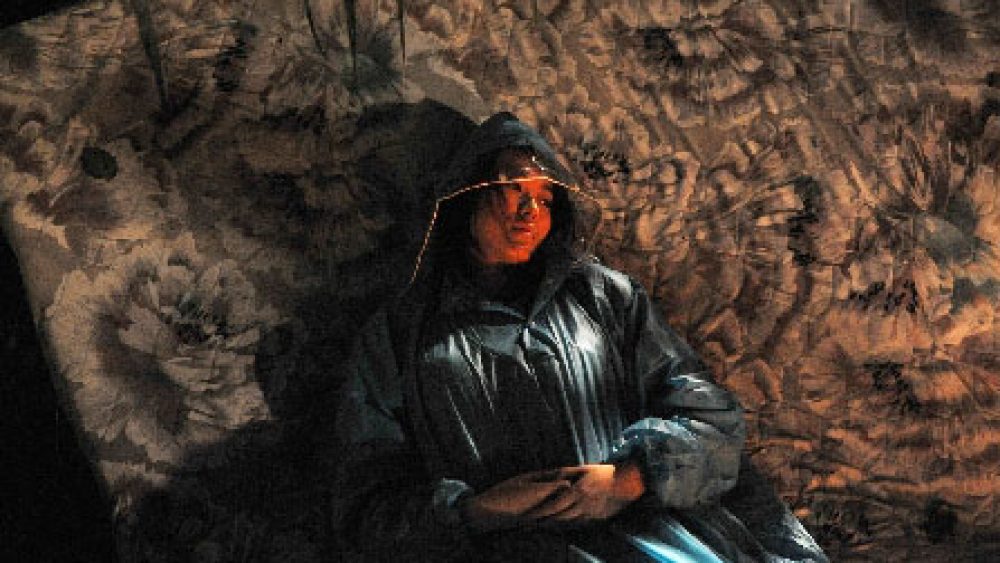How to Describe a Cloud (Slow Criticism)
Evolution of the Senses

Leo Goldsmith checks in from Brooklyn to report on How to Describe a Cloud, the film that Dutch director David Verbeek shot in his second homeland Taiwan.
Somewhere in the speculative bestiaries of Gert van Dijk or Dougal Dixon — many centuries in the future or perhaps on a distant life-sustaining planet — is a creature without nostalgia, an animal evolved beyond memory of past species or past lives, able to look serenely ahead as its ancestors languish in a primitivity of remembrance, wistfulness, and regret.
But let’s not get ahead of ourselves. Here we are hopelessly enmired in the past, even as our worlds become more virtualized, evanescent, nebulous. Even in the Taipei of David Verbeek’s How to Describe a Cloud, where the slick, high-definition cityscapes, seen through windows and screens and flat surfaces, would seem to have thrown off the ache and the awkward dimensionality of the rural — abstraction and technology against materiality and nature.
Liling has transcended these humble origins, or so it would seem, having left the coastal town where her brother and mother remain unchanging in a watery grey-green landscape, as if immersed. She has surpassed even the small pretext for her life in the city: having dropped out of university (going there only to use the running track), she is now engaged in a loose collaborative project of artmaking — mounting photographs in lightboxes and creating experimental environments for electronic sounds. This diffuse intellectual labor, which contrasts with her brother’s very substantial work of fishing and care for their aging mother itself attests to a kind of evolution — of the social and economic — but in Liling’s case these distances are suffused with ambiguity and remorse. She runs but has not been able to move forward.
Liling may not be able to see clearly the road ahead, but in her mother’s eyes — which are themselves like two clouds, grey and sightless — her precarious evolution is still advancing. But her mother is not exactly stagnating either: immobilized by her age and blindness, she believes she is developing an auxiliary sense, a mystical compensatory awareness of the world around her. She feels Liling’s silent presence and communicates to her, perhaps, over vast distances. This new intelligence, however, is ambiguous in its place in a history of progress. Its harmony with her mother’s astrological superstitions suggests an ancient genealogy, but it also gestures to a deeply technologized world of networked, wireless communication. Neither precisely scientific nor supernatural, it is a kind of magical parafuturism that is perhaps less unfamiliar than it seems: when Liling texts her boyfriend, "My mom freaks me out. She thinks she has a sixth sense," he responds by sending her a YouTube link of a blind man wired for a kind of sonar vision. Ours is an age of prostheses and sixth senses, ghosts-in-machines and invisible boyfriends.
But this age is still foreign to us, still indistinct, its haunted, technologically infused space captured by Verbeek and his cinematographer Jean Counet in feverish, blurry images that appear to be bathing in nebula, filmed like the landscapes of an alien planet. During the film’s opening credits, we see such a planet more clearly — in vivid, psychedelic renderings — but these are somehow too crisp, too immediate. These are the cosmic fantasies of Chen, an older xenobiologist whom Liling befriends and then, perhaps, falls in love with. His drawings of alien species — zoological speculations that are, in fact, drawn from the work of Van Dijk — virtualize other worlds, reach out to alternate genetic lineages, other ecologies of communication and cohabitation.
Perhaps this work is utopian. Perhaps by evoking these worlds, Chen is trying to imagine new possibilities, new evolutions, collapsing the distance between those fantastical ‘woolly-haired shufflers’ that may roam alien worlds light years away, and this all-too-near human species that seems to be dying, evolving itself into obsolescence. But in so doing he also creates a distance between himself and the immediate world, between humans. He has not evolved into new spaces or modes of existence so much as dematerialized.
Back in the new world, Liling still stands nebulously between worlds. But perhaps this betweenness is the precisely the place (and the time) in which Verbeek and his film mean to situate us. Between vision and blindness still exists a sensual possibility, whether or not that sense is translated to us, mediated, described by a system of images and words and sounds. Between the shifting intangibles of the future and the hard, ineluctable gravities of the past, there is a present in which the real and the virtual can coexist.
Leo Goldsmith co-edits the film section of The Brooklyn Rail and is a PhD candidate in the Department of Cinema Studies at New York University.



